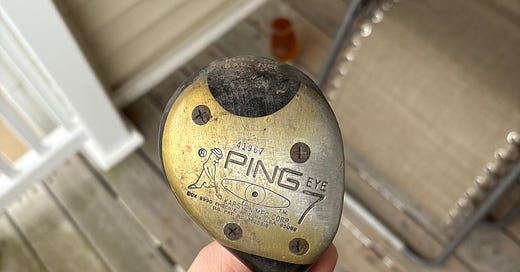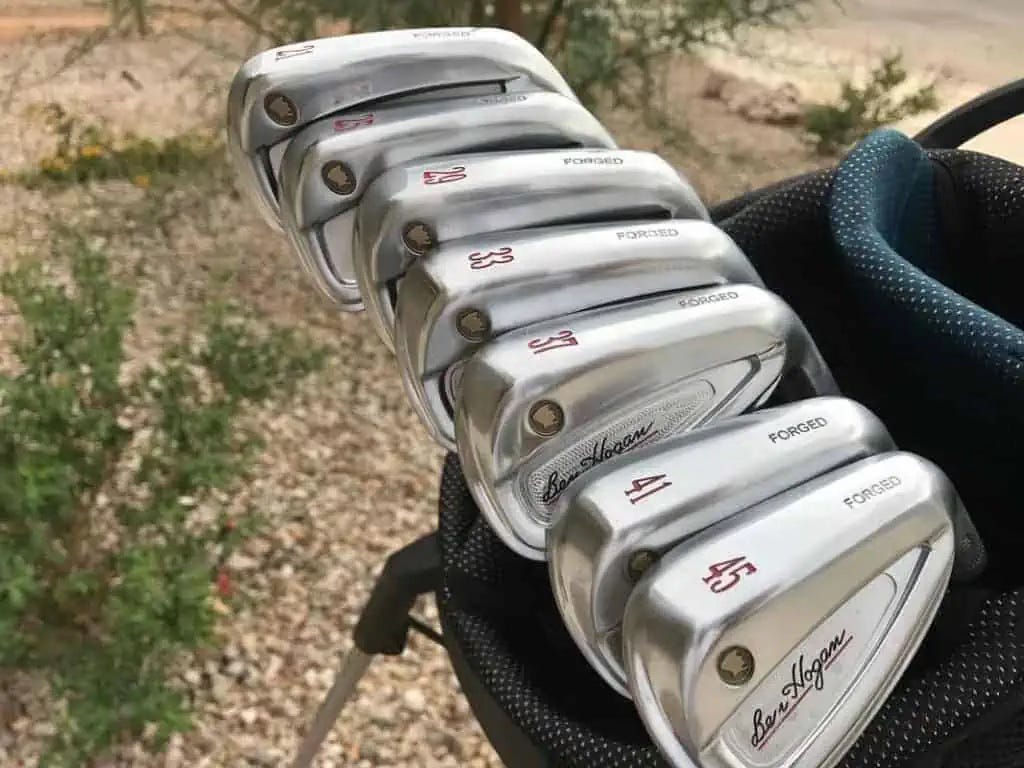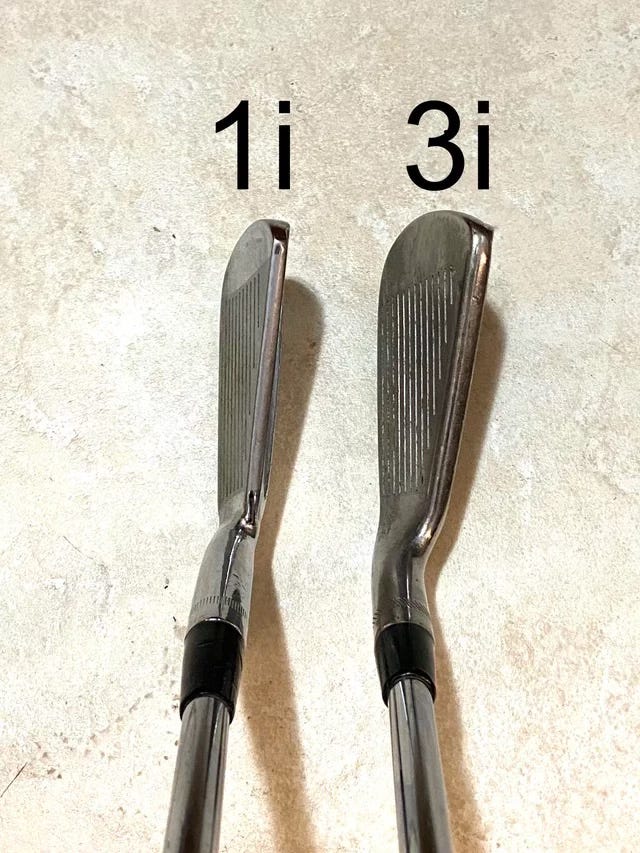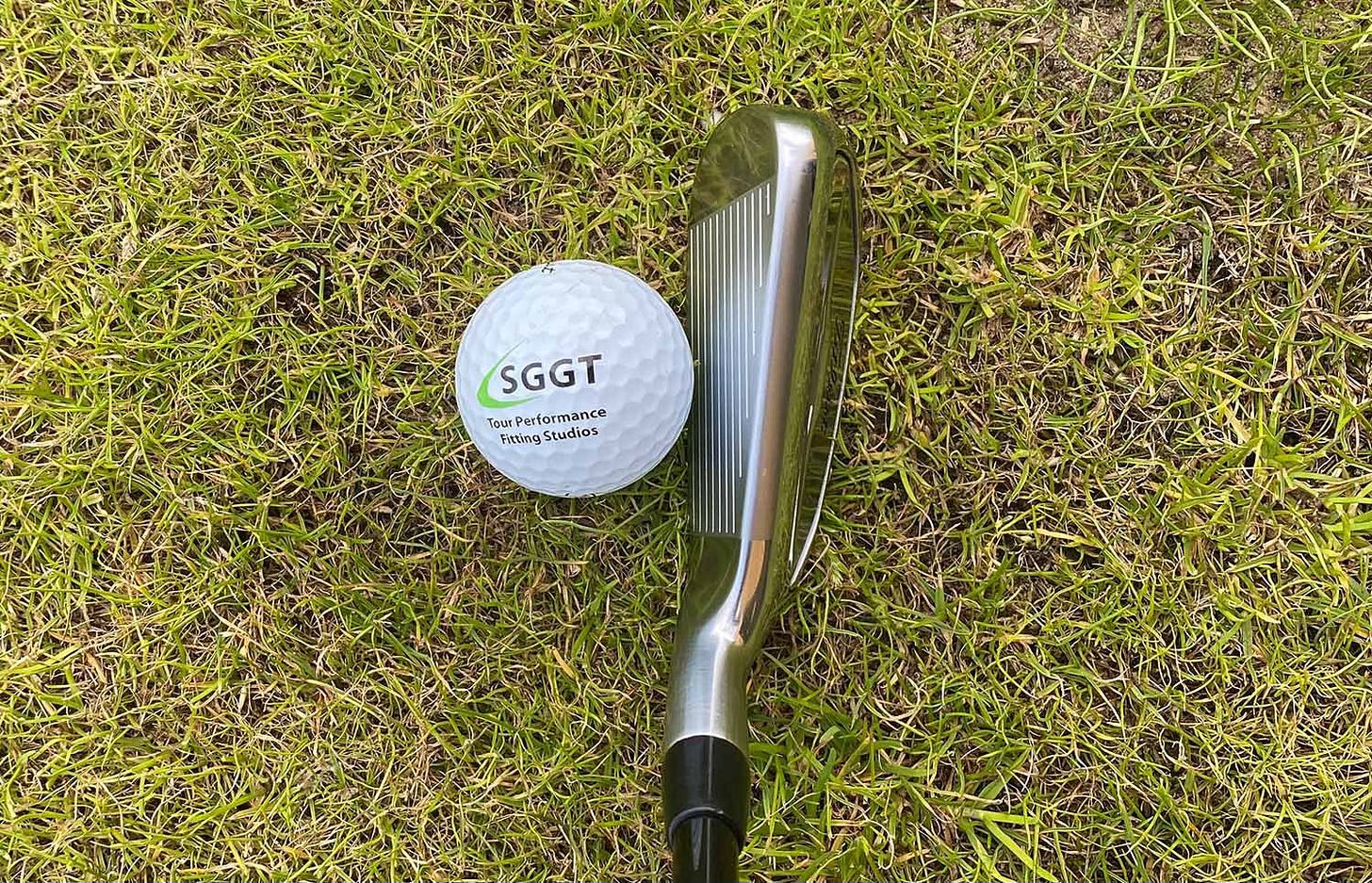Seven woods have been around - as you can see in the cover and above picture. According to a quick Google search of “wooden Ping eye seven wood,” this above club is from 1982; 43 years ago (and somehow not ‘oh, about 25 years ago’ any more is 1980 anymore). Wait, fuck dude. I’m closer to being 40 than I am to being 10. That’s not sitting right with me.
Xander Schauffele. Ludvig Aberg. Patrick Cantlay. Adam Scott. Tommy Fleetwood. Scottie Scheffler. These are a few of the names who employ the use of a 7-wood on the PGA Tour, for reference. But, you may be asking, “what even is a 7-wood?”
In golf, you have your putter, wedges, irons, woods, and driver (which would technically be a 1-wood) - going from what you would use closest to the hole to farther away. Most clubs have some sort of number associated with them; the 6-iron, the 3-wood, the 4-hybrid (which can be considered either a ‘mini wood’ or ‘ a forgiving iron’). The rule with the numbers is that they assign names to lofts. Ben Hogan (the company, not the player) sells clubs with the loft printed on them - so it will say 44° on there instead of the typical 9 for a 9-iron - but that’s just them being assholes. They also don’t se;; ‘pitching wedges,’ but instead sell ‘Equalizers.’
So, the lower the number equals the lower the loft (and, thus, the farther the ball will travel. So, a 4-iron will go farther and fly lower than a 5-iron). Low equals far and far equals low in golf. But what does a 7-wood equal?
A 4-iron’s loft will be around 24° and a driver will be anywhere from 12° to 9° depending on the manufacturer and player’s fits/desires. But, that’s only 12°-15° difference…how are we going to fit the hybrids and woods in between this gap; and the gap even includes clubs like a 3-iron or 2-iron with the hybrids that go as low as 9 or the woods that, evidently, stretch down to 7?
In this wooded world of golf (or golf’s forest), we are starting to look at replacement clubs. As such, a 5-hybrid would be equivalent to a 4-iron while a 7-wood is lofted the same as a 3-iron. (For reference, I am getting my loft rules of thumb based on my own set of clubs: Titleist AP2 716’s. My dad has a 9-wood in the garage - I could also use that for reference crazily [I say ‘crazily’ as if I’m not who bought the club for him]). A player now has options. If s/he finds themself in the rough quite often off the tee - especially on par-5’s - then an iron might be their preferred play to come down sharper on the ball and find the desired flight. However, maybe a golfer wants to find more height in the fairway: they could replace a 4-iron, which is often the lowest lofted iron that a player would carry, with a 5- or 4-hybrid.
Lee Trevino once said that, during a lightning storm, all a golfer needs to do for safety is hold a 1-iron above their head because “even God couldn’t hit a 1-iron.” The 1-iron’s loft is replaced by the 3-wood, a club that has a longer face, more CC’s behind the ball, and can be much more easily maneuvered than a 1-iron. The PGA Tour is a copycat tour; when Jack Nicklaus used to carry a 1-iron, other players did too despite their difficulties. If the best is using it, it should help my game, right? Well,,,
Now that Scheffler, and Schauffele, and Aberg, and others have started using the 7-wood, many more players are going to take a look at their bag and adjust, going down from driver, 3-wood, 5-wood, 7-wood, 5-iron…and on down. But why did this even start? Why did the 7-wood, of all clubs, become such a rage over the last couple of years?
In a simple answer: data. Every tour pro has a Trackman or some kind of device taking incredible amounts of data in the split instant it takes to hit a golf ball. They look at smash fact0or (a relation between ball speed and clubhead speed), spin (horizontal and vertical), distance (carry vs total), and club face angle amongst many more points. Simply put, a PGA Tour pro has all of the information a golfer would need right there next to them on the range, and they have the manufacturing companies following them to every tournament if they ever want to make any tweak to their equipment. A tour pro would use a 7-wood if the data showed it was an advantageous club compared to long irons and hybrids. I’ve linked a video of Ludvig Aberg on the range with Dylan Dethier as he explains a little bit as to why he employs such a club. The important quote comes at the end of the TikTok as Aberg says “you can’t really do that with a 2-iron.”
Why should you, though, use or not use a 7-wood? Should the answer be as simple as “the PGA Tour players have all the numbers and, thus, know all the advantages, so if they’re switching to this club, there must be numbers showing it’d help me!” Well,,,
Not every PGA Tour player uses a 7-wood, let me be clear. Another factor in a club’s usability is simply the confidence that it gives a player to be used. I have a Ping 4-iron Crossover as well as a PXG 4-hybrid. Now, the 4-iron Crossover is an interesting club as it’s an iron face with a hybrid base making it a ‘crossover’ between iron and hybrid. But, I would never, ever use this club before a 4-hybrid. The Crossover just looks gimmicky to me; I don’t think it’s a club one can typically hit well, or I wouldn’t hit any better than a 3-iron (which I no longer carry). I may say here and admit that I do NOT have a 7-wood myself. Why? I have no need. I am happy with how my 3-wood, 2-iron, 4-iron, and down are working for me at the moment. The 2-iron replaced an old 5-wood as I am more confident using the iron out of the rough than a wood.
A rep for the manufacturer Ping (which can again be found having a 1982 7-wood at the very top of this post) described the advantage of a 7-wood, saying “the 7-wood is an easier club to spin than the hybrid. It has a higher peak flight than a hybrid, and it’s more consistent for left-to-right ball flights, especially with how we tend to build them for our tour staff.” This is thanks to the club being a wood (and having a longer shaft).
Additionally, there’s simply the ability to make contact. We’ve heard from Ping that the flight changes with a 7-wood, but we have to hit the ball well for that to take place. Which would be easier to hit? The wood with a longer face or a hybrid with a taller face? Hitting the ball off a higher face, high on the face, simply maximizes the spin and height of the ball, restricting both distance and control. The longer sweet spot on a 7-wood makes it easier to square up or nearly square up as compared to a hybrid. The irons wills have the smallest sweet spots, so maybe a change to a set of hybrids instead of irons could help your game. The 7-wood will reduce the punishment felt by a golfer who hits it away from the sweet spot; it’s a more forgiving club at the top of one’s bag.
In 2009, our quote master Lee Trevino told Golf Digest: “That little club [a 7-wood] turned out to be the best stick I ever had. I could hit it high or low, draw or fade it, hit it 165 yards or 210, all with barely changing my swing. I hit a 190-yard fairway-bunker shot over water to five feet on the ninth hole at that Skins Game - a shot I couldn’t possibly have played with an iron. There’s no sense trying to squeeze something out of your swing if you can let your clubs do the shotmaking for you.”
What about the confidence instilled by the 7-wood? Before I buy one, I want to make sure it’s something I can stand behind (and over) and not waste my money. My Golf Spy has a great article on the technicalities of a 7-wood should any gearhead desire more reading on the club. One thing they mention in simple terms is this: golfers with slower swing speeds will take advantage of a hotter face (as woods will fly farther than hybrids which will fly longer than an iron if all are the same loft) while golfers with higher swing speeds will be able to more softly land (from a greater height and with more spin) on the greens of longer holes such as pa-5’s or par-4’s over 400 yards. Those are what I would consider long holes.
Another reason to get a 7-wood could be distance gaps. Let’s say one hits their 4-iron 200 yards and their 5-iron 185 yards. The driver goes 260 yards and the 3-wood 240 yards. Now, there is a 40 yard gap between clubs and something must fill it. A 3- or 2-iron could do the trick, but their distances could be found to be quite variable depending on the ability to repeat contacts. A 4-hybrid may help, but off the tee it would be worse than a wood. Thus, the 7-wood comes in with easier repeatable contact points (able to carry greater distances on mishits) and greater distance off the tee; meaning this club will most consistently got 220 yards and fill the gap as necessary.
It’s the enhanced versatility that is putting 7-woods in everyone’s bags. Again, My Golf Spy is an excellent resource to learn more about 7-woods and their performances. When it comes to fairway woods, they have yet to release their 2025 rankings, so we can look to 2024 and see that they rated Callaway’s Paradiym Ai Smoke Triple Diamond as the best overall fairway wood with Wilson’s Dynapower coming in second and TaylorMade’s Qi10 rounding out the podium. They go on to rank that same Callaway club with the long ass name as the best wood for distance, the TaylorMade Qi10 Max as the most accurate while Haywood Golf is said to make the most forgiving woods and that Wilson Dynapower is said to be the best club one can get on a budget.
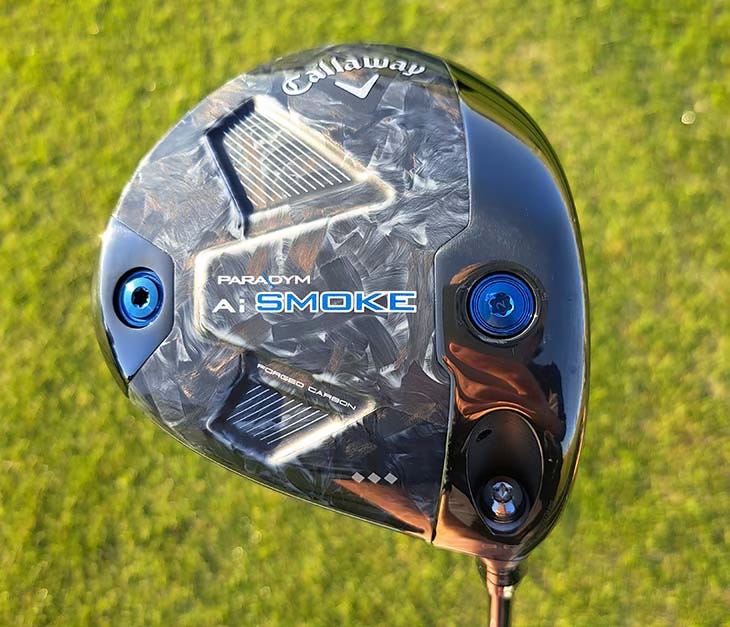
I should be clear: I am not telling anyone to buy a 7-wood. That Callaway one above is $250 on Callaway’s site (the Wilson Dynapower I found on Amazon for $150 in comparison). I am writing this to highlight how the club has risen to prominence and become a new staple in bags across the PGA Tour and the world.
If the tab open next top this one is of the PGA Superstore as you look for a 7-wood on your own, you could possibly buy a coffee as well.
If you’re looking up LIV golfers now who use a 7-wood, fuck off.


